By AGRIVI.
Food transparency has become a critical concern as consumers demand greater insight into the origins and safety of their food. According to the World Health Organization (WHO), unsafe food — often linked to contamination or pesticide misuse — results in 600 million cases of foodborne illness and 420,000 deaths annually. To address these challenges, technologies like AGRIVI’s Traceability solution are transforming the food industry. By integrating scannable QR codes into packaging, AGRIVI provides consumers with easy access to essential information about farming practices, food safety standards, and product origins, enabling them to make informed, value-driven choices.
Tools that allow consumers to access detailed information about their food’s production journey are a significant step forward. With this, consumers gain instant access to a wealth of information about the produce in their hands, unlocking details about the farm location, the specific products used during cultivation, nutritional values, and key insights about the supplier delivering the goods.

Why Transparency Matters
Modern consumers are increasingly focused on health, environmental sustainability, and ethical considerations. They want answers to key questions:
- Where was this product grown?
- What methods were used to produce it?
- Does it meet food safety standards?
Transparency is no longer a luxury; it is an expectation. As concerns about pesticide residues, foodborne illnesses, and environmental impacts grow, consumers seek assurance that the food they purchase aligns with their values. Providing this level of insight builds trust and empowers better decision-making.
How Transparency in Food Works for Consumers
Traceability solution simplifies transparency by embedding QR codes on product packaging. With a quick scan, consumers can access detailed reports that include:
1. Resources Used: Learn about water, energy, and other resources involved in food production.
2. Fertilizers and Pesticides: Understand the types of pesticides and fertilizers used in the farming process, and whether they comply with established safety standards.
3. Nutritional Values: Get insight into the nutritional content of the food, helping consumers make informed decisions based on their dietary needs.
4. Crop Origins: Discover the exact location where the crops were grown, including farm GPS data, offering a clearer picture of the food’s source.
5. Farm Visuals: View images or videos of the farm and production processes, giving consumers a visual connection to the people and practices behind their food.

The Benefits for Consumers
1. Complete Transparency and Confidence
With access to detailed information about the entire production process, consumers can feel confident in their choices. They can verify where their food comes from, how it’s grown, and whether it meets their personal standards for safety and sustainability.
2. Informed Purchasing Decisions
With access to real-time data, consumers are empowered to make informed purchasing decisions based on their own health, safety, and ethical concerns. Whether it’s reducing pesticide exposure, supporting sustainable farming, or choosing locally sourced produce, transparency allows consumers to choose products that align with their values.
3. Enhancing Food Safety
Access to detailed farming and safety information gives consumers peace of mind. Knowing how a product has been handled, which chemicals have been used, and whether the farm adheres to food safety standards helps ensure that the food they consume is safe and healthy.
Addressing Food Safety Challenges
Food safety remains a global challenge. According to the Food Safety and Inspection Service (FSIS), pesticide residues are detected in over 30% of non-organic food samples worldwide. Contamination and foodborne pathogens further compound these risks. QR code-enabled traceability tools help consumers verify the safety and quality of their food, offering a solution to these pressing issues. By providing insights into production practices, traceability empowers consumers to choose products that meet their health and sustainability goals while supporting responsible farming.
Conclusion
The shift toward food transparency is reshaping the industry. Solutions like AGRIVI’s Traceability tool enable consumers to make confident, well-informed choices by providing easy access to critical information about food origins and production practices.
As concerns about safety, sustainability, and ethics continue to rise, tools that build trust and empower consumers will play a vital role in the future of food systems. The EFRA project exemplifies this progress by aspiring to create the first analytics-enabled, secure-by-design, green data space for AI-driven food risk prevention. Its mission is to support the EU’s leadership in transitioning from reactive measures to proactive food safety risk prevention. AGRIVI as a member of the EFRA project consortium, sees great potential in the ability of the project to drive this transition forward, making food safer and more transparent for consumers.
Article originally posted on Medium.




